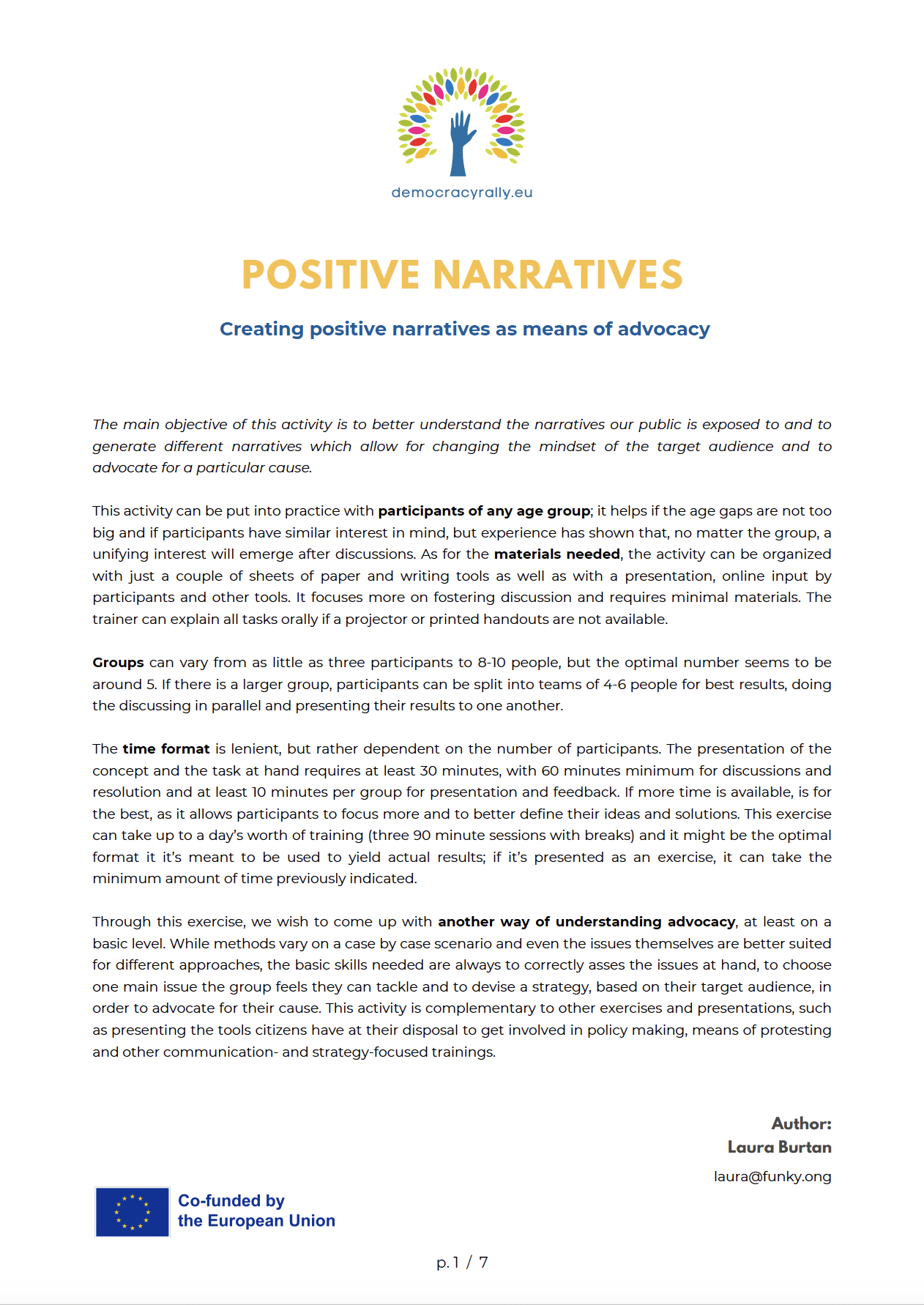Positive Narratives
Creating positive narratives as means of advocacy
Objectives
The main objective of this activity is to better understand the narratives our public is exposed to and togenerate different narratives which allow for changing the mindset of the target audience and toadvocate for a particular cause.
Democracy Skills Addressed
Through this exercise, we wish to come up with another way of understanding advocacy, at least on a basic level. While methods vary on a case by case scenario, and even the issues themselves are better suited for different approaches, the basic skills needed are always to correctly asses the issues at hand, to choose one main issue the group feels they can tackle and to devise a strategy, based on their target audience, in order to advocate for their cause. This activity is complementary to other exercises and presentations, such as presenting the tools citizens have at their disposal to get involved in policy making, means of protesting and other communication- and strategy-focused trainings.
Format
The time format is lenient, but rather dependent on the number of participants. The presentation of the concept and the task at hand requires at least 30 minutes, with 60 minutes minimum for discussions and resolution and at least 10 minutes per group for presentation and feedback. If more time is available, is forthe best, as it allows participants to focus more and to better define their ideas and solutions. This exercise can take up to a day’s worth of training (three 90 minute sessions with breaks) and it might be the optimal format it it’s meant to be used to yield actual results; if it’s presented as an exercise, it can take the minimum amount of time previously indicated.
Age Group
This activity can be put into practice with participants of any age group; it helps if the age gaps are not too big and if participants have similar interests, but experience has shown that, no matter the group, a unifying interest will emerge after discussions.
As for the materials needed, the activity can be organised with just a couple of sheets of paper and writing tools as well as with a presentation, online input by participants and other tools. It focuses more on fostering discussion and requires minimal materials. The trainer can explain all tasks orally if a projector or printed handouts are not available.
Number of participants
Groups can vary from as little as three participants to 8-10 people, but the optimal number seems to be around 5. If there is a larger group, participants can be split into teams of 4-6 people for best results, doing the discussing in parallel and presenting their results to one another.


